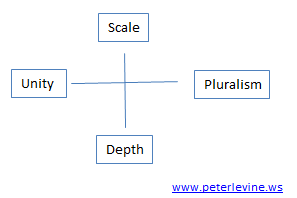- Facebook51
- Threads
- Bluesky
- Total 51
Newly available: Levine P. (2022) Social Movements and Stakeholder Engagement. In: Lerner D., Palm M.E., Concannon T.W. (eds) Broadly Engaged Team Science in Clinical and Translational Research. Springer. https://doi.org/10.1007/978-3-030-83028-1_8
Abstract:
Social movements are among the most powerful sources of popular energy in our society. Scientists and health professionals should expect to see them burgeoning and shaping our understanding of medicine and population health, both for better and worse. This chapter describes challenges to the traditional way of thinking about social movements and explains why people who hold positions inside institutions—including medical researchers, clinicians, and health administrators—need to react to movements more analytically and more constructively. A model for assessing movements is presented. This model can help scientists and health professionals understand the strengths and weaknesses of social movements so they can better decide whether and how to engage with them.
The model is SPUD (scale, pluralism, unity, and depth), which I discuss elsewhere on this blog.
